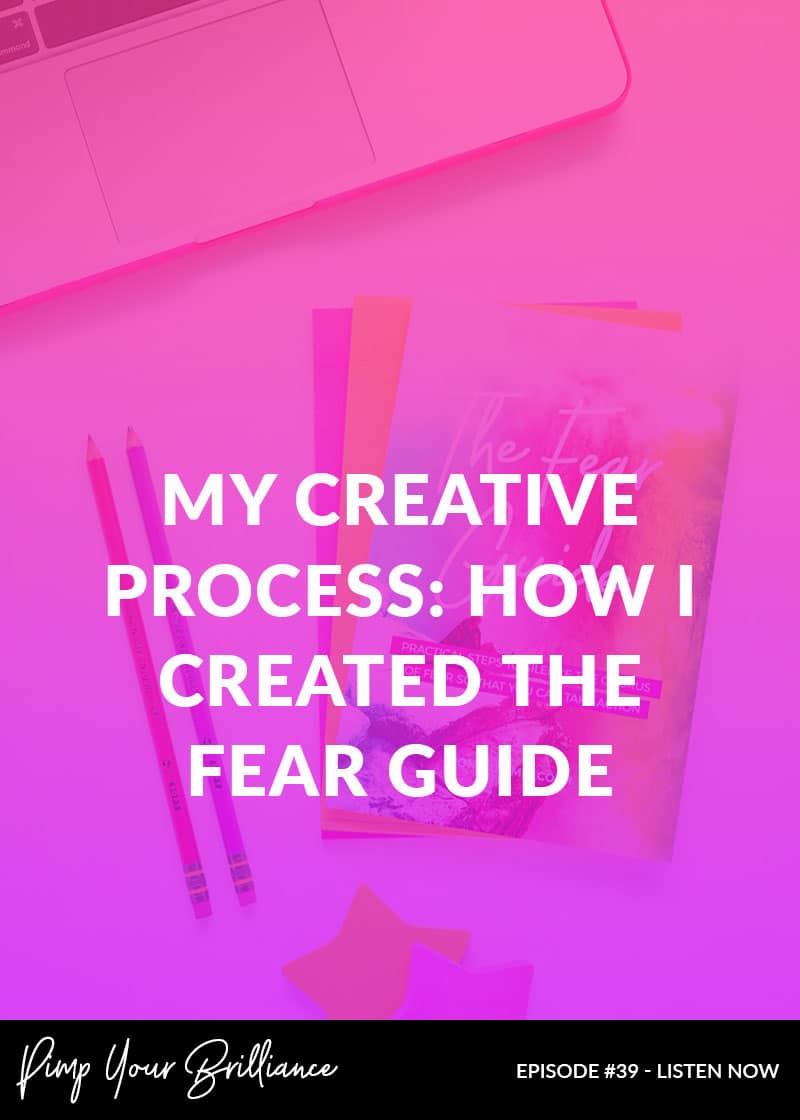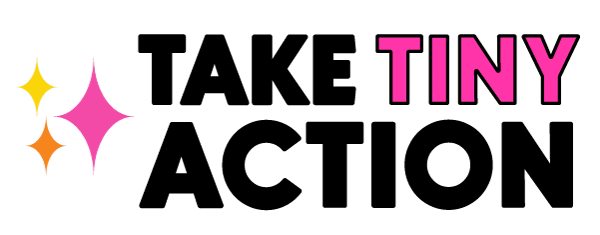
iTunes Google Play Music Stitcher
For the last handful of months, you may have heard me mention my short book The Fear Guide. Today I want to give you a backstage pass into my creative process. I’m going to walk you through what goes on when I get an idea. If you’ve ever been curious about how I go from idea to completed product this is the episode for you.
Why I Wrote The Fear Guide:
Let’s rewind back to July. Writing a short book was not on my radar at all this past Summer. What I actually had in mind was to create a quick opt-in about fear.
Fear is a topic that comes up in many of my conversations with friends, family and clients so it felt like a good time to address it. My plan was to come up with 10 tips or ideas about fear. Dress it up in a beautiful PDF document and get on my merry way.
What actually happened is once I sat down to outline this list of tips I realized that I use the term Chorus Of Fear all of the time but I’ve never defined what that is or what it means. It seemed like a good time to hash that out and to give the idea around the Chorus Of Fear some meaning. That was my starting point.
Breakdown Of My Process:
1. Brainstorm
I always start with what I already know about my idea or topic. In this case, I wrote down all of the ideas I had already formed about the Chorus Of Fear and the steps I would offer someone if they told me that fear was holding them back. I wrote until the well of initial ideas went dry.
Pro Tip: Our ideas don’t come to us in a linear manner so I find brainstorming with pen and paper versus on the computer really helps. Using paper or notecards helps me get all of my ideas out without feeling like I’m constrained to a chronological document on my computer. I can write notes to myself in the margins. Draw arrows to ideas that can be linked. Essentially it can be messy and I don’t feel the need to be perfect. I also find brainstorming in Microsoft One Note useful for this same reason.
2. Basic outline
After I finish brainstorming, I usually walk away from an idea and sit with it for a few days. This is the most crucial part of my process because I need to get a clear idea of what it is that I’m trying to create in order to move forward. In this case, I was pretty sure about what I wanted to write.
I knew I’d need an introduction, a few paragraphs about the Chorus Of Fear and my tips. All of those topics along with my tips served as section headers. This was all done in Microsoft One Note.
3. Research
Researching your ideas is really important. It’s an opportunity to see what is out there, how other people are talking about your topic, what they’re not talking about, and see if there is anything important that you missed.
I wanted to make sure that I didn’t miss highlighting any important steps for quieting your fear. Researching also helped me to determine the order of my steps.
4. Design the cover art
I do this for every project. I mentioned earlier that I can’t start creating until I have a clear mental picture of my finished product. This is one of the main ways that I accomplish that.
5. Start Creating
I started filling in the individual sections as the inspiration struck me. It was easiest for me to tackle the sections that I felt I knew the most about. I wrote them out of order. I didn’t worry about writing the introduction although the idea to tell a story about my brother started taking shape. I literally wrote until I hit a wall. Then, I would walk away from the computer. I kept up this process of starting where ever my creativity determined for the day and then writing until I didn’t have anything to say.
6. Get Feedback
I asked for feedback early on. I had a friend that was my unofficial writing buddy. I sent him the section about the Chorus Of Fear and asked him what he thought. His initial reaction is the reason why I kept writing so enthusiastically.
The chorus metaphor really resonated with him (he’s a singer) but he also pointed out that is was simple enough for the average person to understand. His feedback was invaluable.
After that, I sent links to my working Google Doc to my close friend and family. All of their responses blew me away. I received so many thoughtful messages but the connecting thread was everyone sharing their current experiences with fear. That’s when I knew that this idea was gold.
It was around this time that I had the realization that The Fear Guide would be the basis for my signature talk. Immediately, that thought made me realize that I wanted this to be a physical booklet.
7. Edit
I did really basic editing. I didn’t want to get caught up in trying to make this perfect.
8. Prototype
Because of everyone’s enthusiasm, I decided to make my guide available for print right away. As soon as I was satisfied with what I had written, I formatted into a book and submitted it to Amazon Createspace.
Takeaway
Here’s the idea that I want to leave you with:
Stop holding on so tightly to your ideas. The universe sent that idea to you because you are the perfect person to create it. You and all your beautiful flawed brilliance.
The ideas that we are called to create do not belong to us. They are for the betterment of everyone. Your work can be the necessary first step in liberating someone else from their struggles. So there’s an inherent selfishness in not creating the thing you were called upon to create.
Your work is not for you. So every day that you let pass without stepping up to your calling someone suffers because you haven’t created the thing that they need.
It doesn’t have to be perfect but the idea has to be executed.

What a beautiful post. I love this. Going to implement this soon.